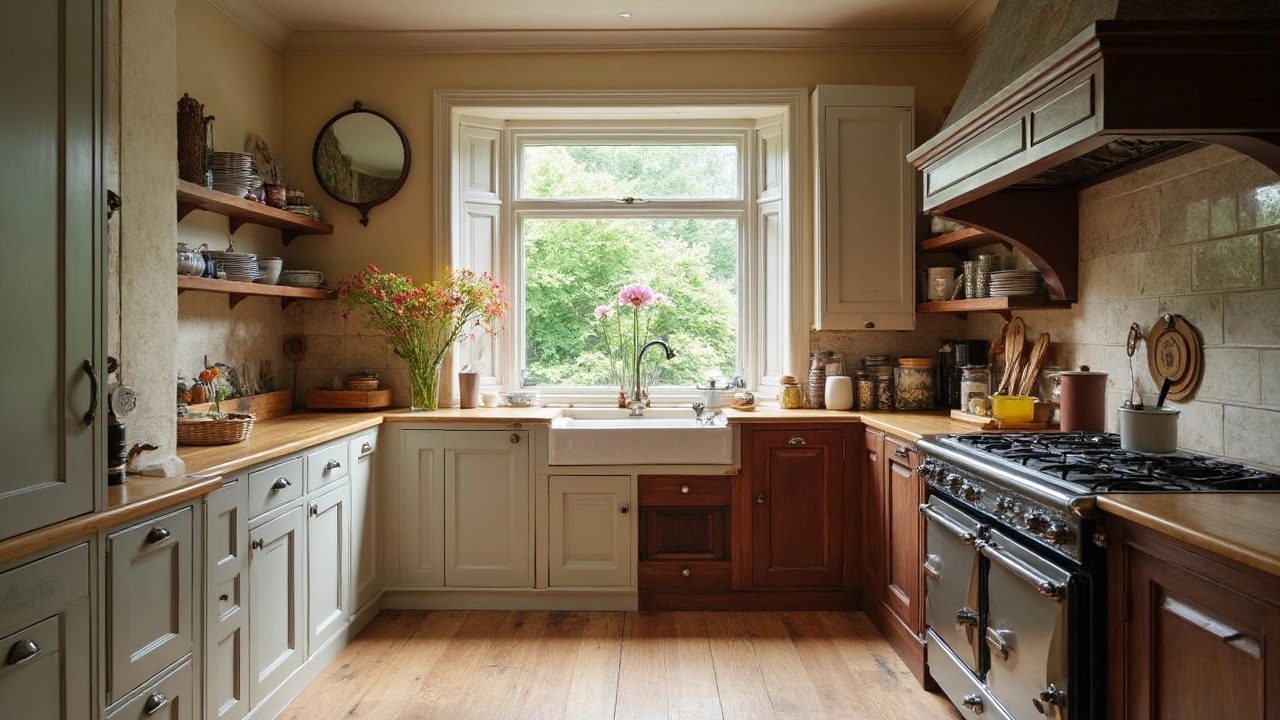Traditional Kitchen Design: Simple Tips for a Classic Look
Thinking about a kitchen that feels warm, timeless, and full of character? A traditional kitchen can give you that cosy vibe without sounding old‑fashioned. Below are the basics you need – from flooring choices to colour tricks – that help you create a space that feels both lived‑in and stylish.
Pick the Right Flooring for a Traditional Feel
Flooring sets the tone in any kitchen. For a classic look, hardwood, stone tiles, or quality ceramic tiles work best. Hardwood adds natural grain and can be stained to match cabinets; oak and walnut are popular choices. If you want something low‑maintenance, go for stone‑look porcelain tiles – they mimic marble or slate but won’t chip as easily. Remember to choose a finish that handles spills; a matte or satin finish hides scratches better than high gloss.
When you’re on a budget, consider engineered hardwood. It looks like solid wood but costs less and tolerates changes in humidity – a plus for kitchens. Lay the planks either straight or in a subtle herringbone pattern for a touch of elegance without overdoing it.
Colour, Cabinets & Classic Details
Traditional kitchens love warm neutrals. Cream, soft beige, and muted greys pair nicely with wood tones. If you want a bit of drama, add navy or forest green on a feature wall or island. Cabinets should have simple, clean lines – raised panels or shaker style work well. Glass‑front cabinets add a hint of vintage charm, while brass or bronze hardware brings in that old‑world feel.
Don’t forget the little details. Crown molding, a decorative tile backsplash, and a farmhouse sink can instantly raise the classic appeal. Open shelving made of reclaimed wood lets you display dishes and adds personality without looking fussy.
Lighting matters too. Warm LED pendants over the island or a chandelier with a brushed metal finish give the room a cosy glow. Install under‑cabinet lights to make the countertop work area brighter and more functional.
Finally, think about durability. Traditional kitchens see a lot of traffic, so choose surfaces that can stand up to daily wear. Seal hardwood floors and stone tiles regularly, and clean cabinets with a gentle wood cleaner to keep the finish looking fresh.
By focusing on these key areas – flooring, colour, and classic details – you can build a traditional kitchen that feels both inviting and timeless. Whether you’re renovating a whole house or just updating the heart of your home, these practical tips keep the project affordable and the result impressive.
Shaker Kitchen vs Traditional Kitchen: What's the Real Difference?
- Gavin Whitaker
- |
- |
- 0
This article breaks down the key differences between shaker kitchens and traditional kitchens. It covers design features, history, materials, and why certain styles work better in specific homes. You'll get tips for picking the vibe that matches your lifestyle, plus some fun facts that make these kitchen styles unique. Perfect for anyone planning a kitchen remodel. No fluff—just clear, straight-to-the-point info.
View more